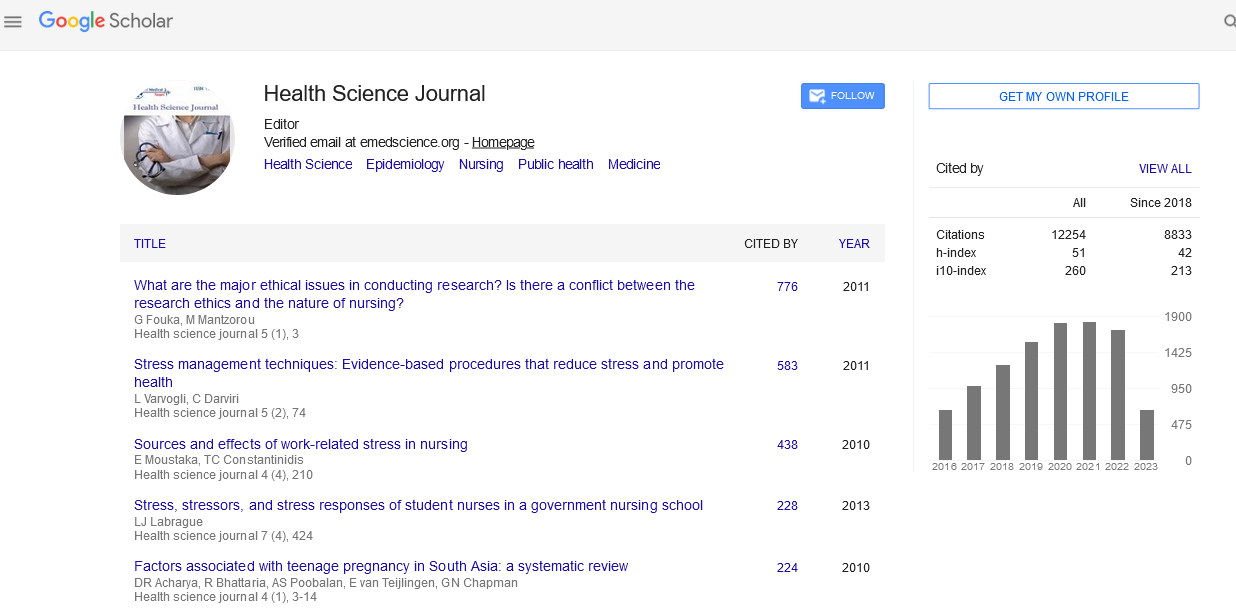Editorial - (2025) Volume 19, Issue 3
Public Health Foundations Challenges and the Future of Population Wellbeing
Kunal Singh*
Department of Public Health, Lucknow University, India
*Correspondence:
Kunal Singh, Department of Public Health, Lucknow University,
India,
Email:
Received: 01-Feb-2025, Manuscript No. Iphsj-25-15665;
Editor assigned: 04-Feb-2025, Pre QC No. Iphsj-25-15665 (PQ);
Reviewed: 17-Feb-2025, QC No. Iphsj-25-15665;
Revised: 28-Feb-2025, Manuscript No. Iphsj-25-15665 (R);
Published:
31-Mar-2025
Abstract
Public health is a multidisciplinary field concerned with protecting and improving the health of populations through organized efforts, policies, and education. This article provides a comprehensive overview of public health, tracing its historical foundations, examining current challenges, and exploring future directions. It highlights the critical role of epidemiology, health promotion, environmental health, and health policy. Special focus is given to the impact of global health threats, health disparities, and the need for sustainable health systems. Finally, it proposes strategies to strengthen public health capacity and resilience in the 21st century.
Introduction
Public health is integral to the wellbeing of societies, encompassing activities aimed at preventing disease, prolonging life [1], and promoting health through organized community efforts. It operates at the intersection of science, policy, and social justice, focusing not just on individuals, but entire populations. While clinical medicine treats illness, public health seeks to prevent it, often addressing the upstream social and environmental determinants that shape health outcomes [2].
Historical Background
The origins of public health date back to ancient civilizations. Sanitation systems in Rome and the Hippocratic notion of environmental influences on health mark early awareness. The modern public health movement gained momentum in the 19th century with Edwin Chadwick’s sanitation reforms in England and John Snow’s epidemiological work during the London cholera outbreak. The 20th century brought advances in vaccination, hygiene, and the establishment of public health institutions such as the World Health Organization (WHO) [3].
Core Functions and Disciplines
Epidemiology is the cornerstone of public health, focusing on the distribution and determinants of health-related states and events. It provides data for decision-making and policy development, enabling effective disease surveillance and outbreak investigation. This field addresses the physical, chemical, and biological factors external to a person that impact health. Clean air, water, and safe housing are fundamental to preventing diseases like asthma, lead poisoning, and waterborne infections. Health promotion involves empowering individuals and communities to take control of their health. This includes initiatives on tobacco cessation, nutrition, physical activity, and mental health. Education campaigns and behavior change strategies are vital tools in this effort. Public health policies determine resource allocation, healthcare access, and health equity. Sound management practices ensure that public health systems operate efficiently and effectively to serve populations [4].
Contemporary Public Health Challenges
NCDs such as cardiovascular diseases, diabetes, cancer, and respiratory diseases are now leading causes of mortality worldwide. Their rise is linked to lifestyle factors, urbanization, and aging populations. Despite progress, infectious diseases remain a threat. The COVID-19 pandemic exemplifies the global vulnerabilities and the need for rapid public health responses, international cooperation, and robust surveillance systems. Inequities in health outcomes persist across racial, socioeconomic, and geographic lines. These disparities are influenced by the social determinants of health—education, income, housing, and access to healthcare. Environmental degradation and climate change pose significant public health risks, including heatwaves, vector-borne diseases, food insecurity, and displacement [5].
Innovations and the Future of Public Health
The integration of big data, artificial intelligence, and mobile health technologies is revolutionizing disease tracking, health education, and intervention delivery. Engaging communities in health planning ensures culturally competent services and fosters trust in public health initiatives. Globalization requires cross-border cooperation. Programs like COVAX and the Global Health Security Agenda (GHSA) exemplify collaborative efforts to tackle transnational health issues. Investments in training, workforce development, and healthcare infrastructure are essential to build resilient systems capable of withstanding future health crises.
Conclusion
Public health is an evolving discipline that plays a pivotal role in enhancing population health and achieving health equity. Addressing current and future challenges requires multidisciplinary approaches, global solidarity, and a commitment to justice and sustainability. By reinforcing public health systems and embracing innovation, societies can safeguard the health of current and future generations.
References
- Hemachudha T, Laothamatas J, Rupprecht CE (2002) Human rabies a disease of complex neuro pathogenetic mechanisms and diagnostic challenges. Lancet Neurology 1:101-109.
Indexed at, Google Scholar, Crossref
- Kidane A, Dessalegn S, Tesfaye B, Deressa A, Pal M (2016) Rabies in animals with emphasis on dog and cat in Ethiopia. World’s Vet J 6:123-129.
Indexed at, Google Scholar, Crossref
- Knobel DL, Cleaveland S, Coleman P G, Fèvre EM, Meltzer MI et al. (2005) Re-evaluating the burden of rabies in Africa and Asia. Bull World Health Organ 83:360-368.
Indexed at, Google Scholar
- Lembo T, Attlan M, Herve B, Cleveland S, Costa P et al. (2011) Renewed global partnerships and redesigned roadmaps for rabies prevention and control. Vet Med Int 1-18.
Indexed at, Google Scholar, Crossref
- Deressa A, Ali A, Beyene M, Newayeselassie B, Yimer E (2010) The status of rabies in Ethiopia: A retrospective record review. Ethiop J Health Dev 24:127–132.
Indexed at, Google Scholar, Crossref
Citation: Singh K (2025) Public Health
Foundations Challenges and the Future of
Population Wellbeing. Health Sci J. Vol. 19
No. 2: 1225.





